Level up your game faster: pickleball improvement
As the phrase goes, "practice makes perfect," but in the world of sports, it’s essential to practice smart. Wall drills are a perfect example of this, allowing players to maximize their repetitions in a shorter amount of time compared to conventional training. While games provide valuable experience, they may not allow enough opportunities for players to work on specific skills. In contrast, these drills offer immediate feedback and repetitive practice, leading to accelerated skill development.
Consider the impact of growing accustomed to repetitive scenarios: your hands automatically learn the proper techniques and your mind becomes adept at strategizing under pressure. Players who implement wall drills into their routine find they gain consistency in their shots whether during the soft dinks or aggressive volleys directly translating to increased confidence on the court.
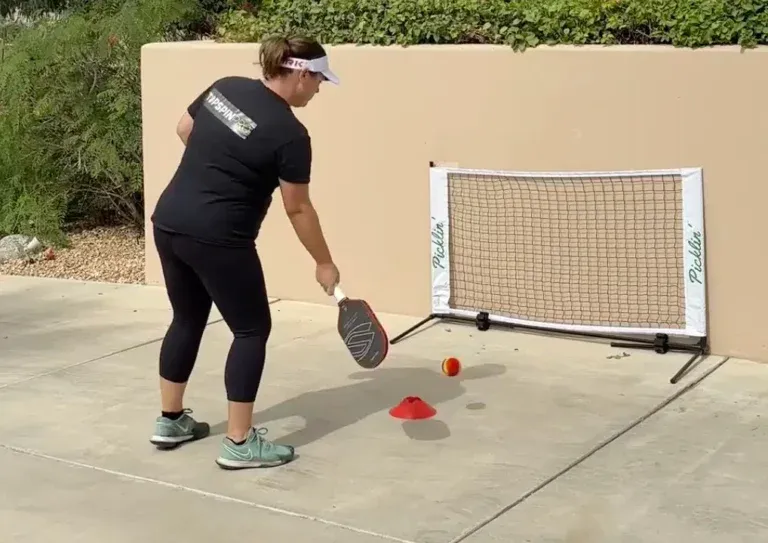
Furthermore, the specific focus of wall drills enables players to cultivate a detailed understanding of their strengths and areas for improvement. This specialized attention leads to a more controlled development of skills. In short, pickleball improvement is a journey that can be expedited through the clever use of wall drills; players can unlock their true potential faster than they ever imagined.
Practice anytime, anywhere: pickleball solo practice
One of the defining features of wall drills is the unparalleled flexibility they offer to players. Gone are the days when training required a partner or a dedicated court space now, all you need is a wall. This convenience makes wall drills an attractive option for players juggling busy schedules.
Imagine fitting in a quick set of forehand dinks during your lunch break or practicing backhand volleys in your driveway after work. The ability to practice anytime, anywhere fosters a culture of regular training, resulting in more consistent improvement over time. Moreover, practicing alone can help players develop a deeper connection to their game, allowing for reflective thought on technique and approach without the noise of competition.
As modern life becomes increasingly hectic, integrating wall drills into your training routine ensures that your love for the game remains alive and well. It allows you to create your own personal training sanctuary, where you dictate the rules and pace, ensuring that your focus remains on skill enhancement. Whether you are in a park, at home, or on vacation, the freedom of solo practice turns any location into your personal court.
Setting up your pickleball wall drill station: pickleball wall drill setup
Creating an effective pickleball wall drill setup can be achieved easily and quickly by following a few straightforward steps. First, identify a suitable wall that offers a solid rebound without obstacles. Ideally, the wall should be 20 to 30 feet long to facilitate a variety of drills. Once you've chosen the perfect location, consider marking the net height with tape. For standard pickleball games, this height is 36 inches; marking this will help simulate a real game environment.
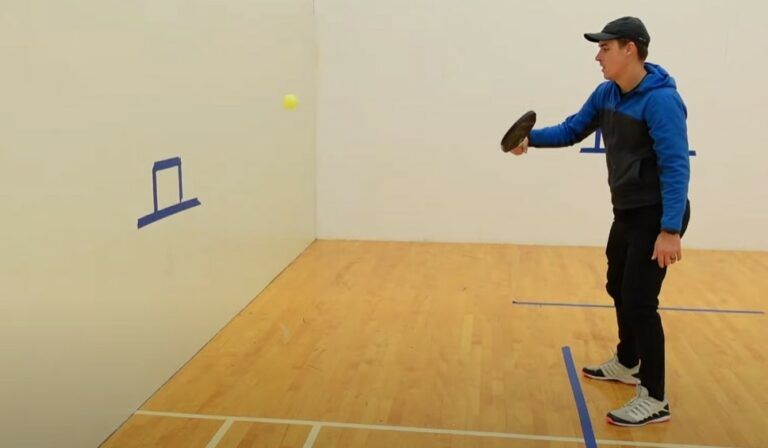
To further enhance your drills, it’s beneficial to mark the non-volley zone line, which is 7 feet from the wall. Here’s how to set up your wall drill station:
- Choose a solid wall: Look for walls with no obstructions and one that has a solid surface for the ball to bounce off.
- Mark net height: Use tape to create a visible line at the 36-inch height.
- Mark the non-volley zone: Affix tape 7 feet from the wall to create a non-volley zone line.
- Measure appropriate distances: Ensure there’s enough space for movement around the drill area.
Having a well-structured training station not only makes practicing drills more productive but also helps maintain focus during sessions. Visual representations can be incredibly beneficial; therefore, consider drawing a simple diagram to keep everything in perspective. Consistent training in this designated spot fosters both physical and mental preparedness for gameplay.
Essential gear for pickleball wall drills
To engage effectively in wall drills, having the right pickleball gear is crucial. You don’t need expensive gear to get started, but certain items will certainly enhance your training experience. Here’s a list of essential gear to consider:
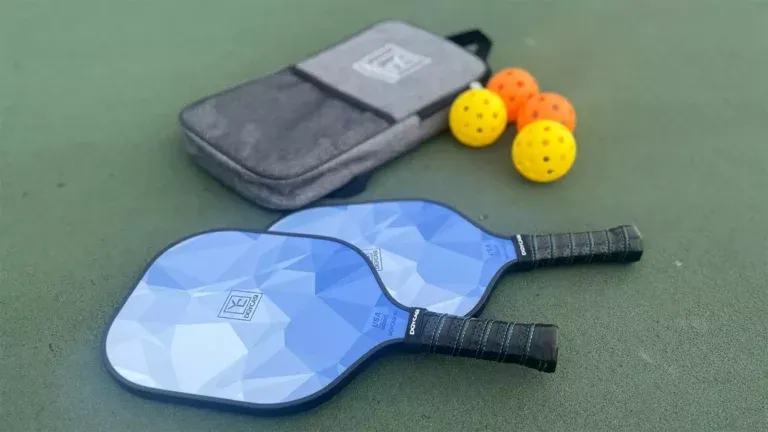
- Pickleball Paddle: A good quality paddle is fundamental for performing various drills. Ensure you choose one that fits your playing style.
- Pickleballs: Utilize durable, standard-sized pickleballs appropriate for training sessions.
- Tape: Essential for marking the wall and creating targets, tape will help you simulate game conditions effectively.
- Optional Gear: Though not mandatory, a ball hopper can add convenience to collecting balls after drills, and a practice net can serve as an extra tool for skills training.
This simple equipment list doesn’t just prepare you for wall drills, but it also paves the way for more comprehensive skills training down the line. Investing in the right gear can serve as a cornerstone to consistent improvements, making each practice session more fruitful.
Warm up: prime your body for pickleball success
Before diving into rigorous drills, it's vital to warm up properly. Just as an artist needs to prepare their canvas, a player must prepare their body for action. Warming up not only helps prevent injuries but also enhances performance by preparing the muscles for activity.
A proper warm-up typically elevates your heart rate, increases blood flow to muscles, and raises your body temperature. By prioritizing this phase, you set the stage for a successful training session and reduce the risk of potential injuries.
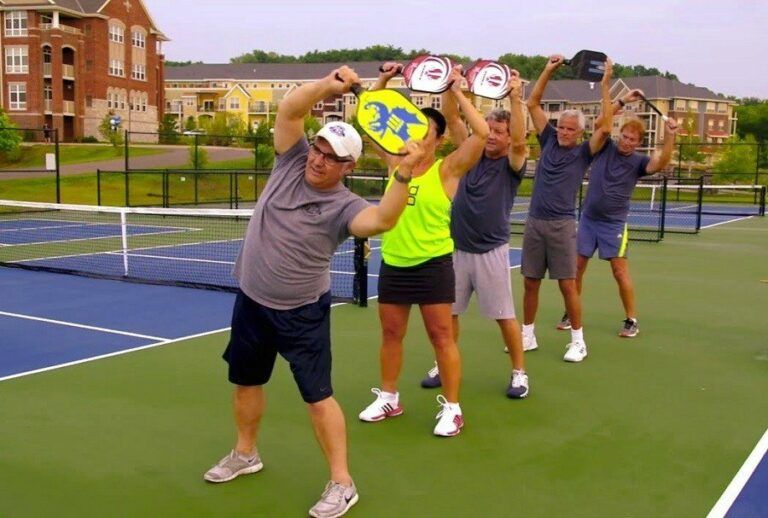
Dynamic stretching specifically tailored to the movements of pickleball can be beneficial. Consider including the following stretches as part of your warm-up routine:
- Arm Circles: Open your arms wide and make circular motions to mobilize your shoulder joints.
- Leg Swings: Swing each leg forward and then backward to loosen your hip joints.
- Torso Twists: Stand with feet shoulder-width apart and twist your upper body side to side, fully engaging the core.
Engaging in these warm-up stretches helps increase overall flexibility and prepares your body for the agility and quick reflexes required during drills. Prioritizing a comprehensive warm-up routine ensures that you're ready to tackle each drill with energy and focus.
Mastering the dink: the foundation of pickleball
At its heart, pickleball is a game of finesse as much as it is a game of power. One of the foundational shots that defines player strategy is the dink. This soft shot, intended to land within the opponent's non-volley zone, allows for control and can create tactical opportunities during gameplay. Mastering the dink is, therefore, fundamental for developing a strategic edge on the court.
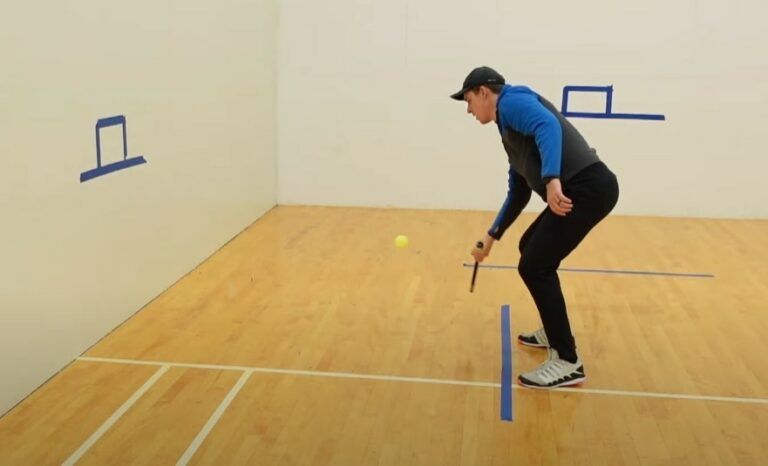
The dink: your go-to soft shot: pickleball dink
The dink isn't simply a tactical maneuver; it's an art form requiring precision and control. As the game evolves, players who excel at the dink can effectively dictate the rhythm and pace of rallies. By focusing on soft, controlled shots aimed at the no-volley zone, players can extend rallies and frustrate their opponents.
Forehand dink wall drill: pickleball forehand dink
To get started with dinking, the forehand dink wall drill is an excellent entry point. Here’s how to execute this essential drill:
- Grip: Utilize a continental grip, which offers versatility for both dinks and volleys.
- Stance: Position yourself in an athletic stance with knees slightly bent, weight balanced, and feet shoulder-width apart.
- Technique: Focus on maintaining soft hands and minimal wrist movement. Limit your backswing and follow through toward your intended target on the wall.
- Target: Aim for a specific spot on the wall that aligns slightly above the net line.
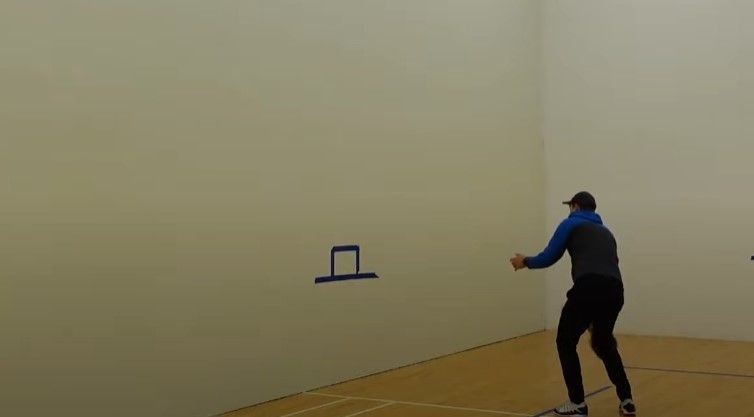
Focusing on consistency and control is key; you should aim to hit the same spot repeatedly, helping develop muscle memory that translates into match performance.
Backhand dink wall drill: pickleball backhand dink
Similar to the forehand, the backhand dink plays a crucial role in executing controlled shots. Here’s how to perform it effectively:
- Grip: Maintain a firm grip, ensuring stability as you execute the shot.
- Stance: Step into the shot with your non-dominant foot to generate momentum.
- Technique: Use your shoulder to generate power, while ensuring your wrist remains firm throughout the swing.
- Target Practice: As with the forehand, choose a designated spot on the wall to hit with precision.
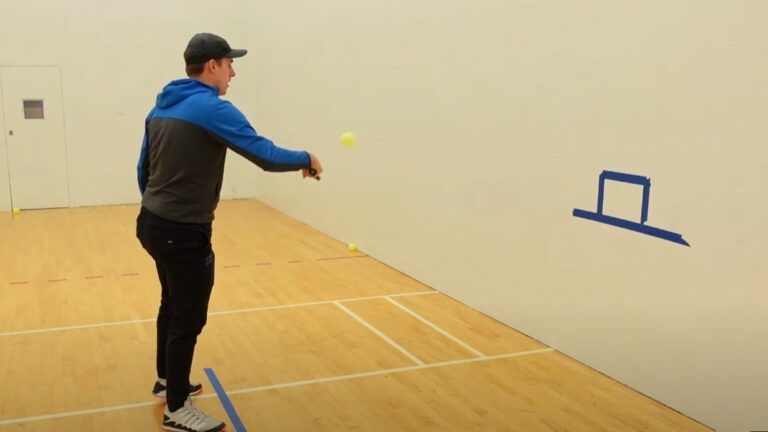
Both forehand and backhand dinks should feel second nature with practice. Through these drills, players can establish reliability during strategic gameplay, making the dinks whether forehand or backhand an integral part of their arsenal.
Alternating dinks wall drill: pickleball dink practice
Finally, combining both shots into an alternating dinks wall drill enhances versatility. Start slowly, alternating between forehand and backhand shots. Gradually increase the speed while maintaining accuracy, and consider introducing targets for more intentional practice. This approach simulates real-game scenarios where players are required to think on their feet and adapt, pushing the boundaries of their skill development.
Building volleying prowess: dominate at the net
After developing your dinking strategy, it’s essential to refine your volleying skills. Volleying the act of hitting the ball before it bounces can often be the differentiator in a tightly contested match. A well-executed volley allows players to maintain offensive pressure and capitalize on their opponent's weaknesses.
Volley: the aggressive weapon: pickleball volley
The volley is an aggressive tool in a player’s arsenal, transforming defense into offensive opportunities. A player who can effectively volley adds an immediate threat to their game, turning rallies in their favor.
Forehand volley wall drill: pickleball forehand volley
Executing the forehand volley effectively requires precision and confidence. Here’s how players can practice:
- Grip: Maintain a solid grip that allows for control without sacrificing power.
- Stance: Position your body to move easily in any direction.
- Technique: Focus on striking through the ball while keeping your paddle face solid.
Backhand volley wall drill: pickleball backhand volley
For backhand volleys, the technique mirrors that of the forehand but requires slight adjustments. Here’s how to effectively execute it:
- Grip: Ensure a firm grip for stability.
- Stance: Be ready to pivot and shift as needed.
- Technique: Employ a smooth and controlled swing, aiming for a clean contact point.
Alternating volleys wall drill: pickleball volley practice
Finally, practice alternating between forehand and backhand volleys against the wall. This volley drill enhances your adaptability while improving coordination and timing, essential skills for maintaining momentum during games.
Speed-ups, resets, and counters: mastering tempo changes
To truly dominate in pickleball, understanding how to manage the tempo of plays is vital. It’s not just about hitting hard it's about knowing when to ramp up the intensity and when to reset.
Speed-ups: catch your opponent off guard: pickleball speed up
A well-executed speed-up can catch an opponent off guard, shifting the momentum of the rally to your favor. Practicing this technique helps cultivate an innate sense of when to change gears during gameplay.
Resets: take control of the rally: pickleball reset
Knowing how to reset after a challenging shot allows players to regain control of the game. This technique invites players to re-evaluate their positioning and strategy.
Counters: turning defense into offense: pickleball counter
Learn to turn defense into offense with counters, a skill that transforms a challenging situation into an opportunity for victory.
Combination drills: speed-up, reset, counter: pickleball tempo control
Integrating speed-ups, resets, and counters into one drill enables mastery over tempo management. By simulating varied scenarios, players develop a diverse toolkit that enhances adaptability on the court.
Groundstrokes and serves: the power shots
Groundstrokes and serves often serve as the foundation for initiating plays in pickleball. Mastery of these shots can significantly impact the outcome of matches.
Groundstrokes: driving from the baseline: pickleball groundstrokes
Groundstrokes convey power and control, allowing players to dictate the pace of play. Mastering both forehand and backhand groundstrokes is essential for a well-rounded game.
Forehand groundstroke wall drill: pickleball forehand drive
Practice your forehand drive against the wall by following these essential steps:
- Grip: An appropriate grip gives you control over power.
- Positioning: Stand at a comfortable distance that allows a clean hit.
- Technique: Focus on a full, controlled stroke.
Backhand groundstroke wall drill: pickleball backhand drive
The backhand drive can be equally powerful when executed correctly. Using these steps will help hone this essential shot:
- Grip: Keep your grip steady to maintain control.
- Positioning: Ensure you're standing in the optimal spot.
- Stroke Technique: Focus on smooth execution for maximum impact.
Serve wall drill: pickleball serve practice
Practice your serve against the wall to refine this critical shot. Repeat a consistent motion to develop reliable serve technique, striving for accuracy and placement rather than sheer power.
Return of serve wall drill: pickleball return of serve
A solid return of serve puts pressure back on your opponent. Practicing your returns can prepare you for various server styles and help build confidence for match play.
Third shot drops: the art of deception
The third shot drop may be among the most strategic components of pickleball. Understanding this concept enriches your gameplay.
Third shot drop: a strategic weapon: pickleball third shot drop
This shot is designed to land softly in your opponent's kitchen, creating an opportunity to take control of the point.
Third shot drop wall drill: pickleball drop shot practice
Practicing this shot against the wall allows you to fine-tune your touch and control. Focus on consistency ensuring that you’re landing in the designated area with precision.
Adding spin to third shot drops: pickleball drop shot spin
Incorporating spin to your drop shots adds another layer of complexity and deception. Practicing this technique can elevate your gameplay, making your shots less predictable and more challenging for your opponent to read.
Overheads: the power play
Mastering overhead shots can be the key to winning crucial points in a match. While finesse plays a vital role, understanding when to unleash power can change the dynamic of a game.
Overheads: winning points with authority: pickleball overhead smash
The overhead smash is all about execution and timing. Recognizing the right moment to throw down an aggressive shot can catch your opponent off guard and lead to a decisive point.
Overhead wall drill: pickleball overhead practice
For effective practice, focus on established techniques while ensuring you maintain control as you strike the ball overhead. Developing precision in this powerful shot ensures you’re ready when a high ball presents itself during matches.
Tips for overhead control: pickleball overhead technique
Timing, positioning, and the strength of your swing are critical when executing overhead shots. Practicing these elements helps ensure that your smashes become effective weapons in your arsenal.
Developing soft game skills: finesse and control
As players begin to master power shots, they should also invest in developing soft game skills. These skills demand finesse, precision, and strategic thinking, providing balance to a player’s overall skill set.
The importance of soft game: pickleball soft game
Enhancing your soft game creates a tactical depth that allows you to control the pace of the game effectively. A diverse strategy is crucial for maintaining competitiveness.
Crisscross drill: pickleball crisscross drill
To enhance soft shots, engaging in crisscross drills forces players to focus on precision while integrating movement into their practice. This drill ensures better adaptability during real matches.
Double touch drill: pickleball double touch drill
The double touch drill offers an excellent opportunity to practice soft touch shots, honing both control and finesse. Practicing such drills makes the softer shots in gameplay feel second nature.
Other touch drills: pickleball touch practice
Explore additional touch drills to further refine your soft game, offering repeated opportunities to practice crucial elements that define your play.
Putting it all together: flow drills for game-like practice
To tie your enhanced skills together, flow drills simulate a real match experience. These exercises promote a seamless integration of skills while emphasizing footwork, timing, and decision-making.
Flow drills: simulating real matches: pickleball flow drills
Integrating various shots into a smooth flow emphasizes movement and thought processes during gameplay. This drills helps players gain a deeper understanding of tactical decision-making while on the court.
Examples of flow drills: pickleball wall drill routine
Create a routine that incorporates all elements such as serves, volleys, groundstrokes, and dinks in a fluid sequence. This comprehensive practice makes it easier to transition between skills during real matches.
Focusing on transitions: pickleball footwork drills
Pair flow drills with focused footwork training to ensure you're ready to make quick adjustments as needed during gameplay. Strong transitions maximize effectiveness during actual matches.
Practice tips and strategies for pickleball success
In pursuit of pickleball mastery, consistent practice is essential. To enhance your ability and enjoyment of the game, consider the following tips:
Consistency and repetition
Strive to make your wall drills part of your regular routine. Regular and systematic repetitions breed familiarity and competence, leading to overall improvement in your game.
Focus on technique, not power
Always prioritize proper technique over raw power. While hitting with strength can be tempting, the emphasis should remain on accuracy and control.
Progressive overload: challenge yourself gradually
Push your limits by gradually introducing challenging drills that elevate your skill level. A progressive approach nurtures growth without overwhelming you.
Gamify your wall drills
Add playful challenges to your routine. Setting goals, timing drills, and utilizing competition can keep motivation high while enhancing skill retention.
Listen to your body
Pay attention to how your body feels throughout practices. Optimal training requires rest and recovery; listen for cues that indicate fatigue or discomfort, ensuring a balanced approach to improvement.
Conclusion
Incorporating pickleball wall drills into your training regimen is not merely about repetition it's about sharpening your skills, enhancing muscle memory, and building a confident foundation for gameplay. Embrace this method of practice as an avenue to flourish on the court, where every shot serves as a stepping stone toward becoming the player you aspire to be. With dedication to consistent practice and these strategic drills, you will undoubtedly unlock your pickleball potential and enjoy every moment of your sporting journey.










